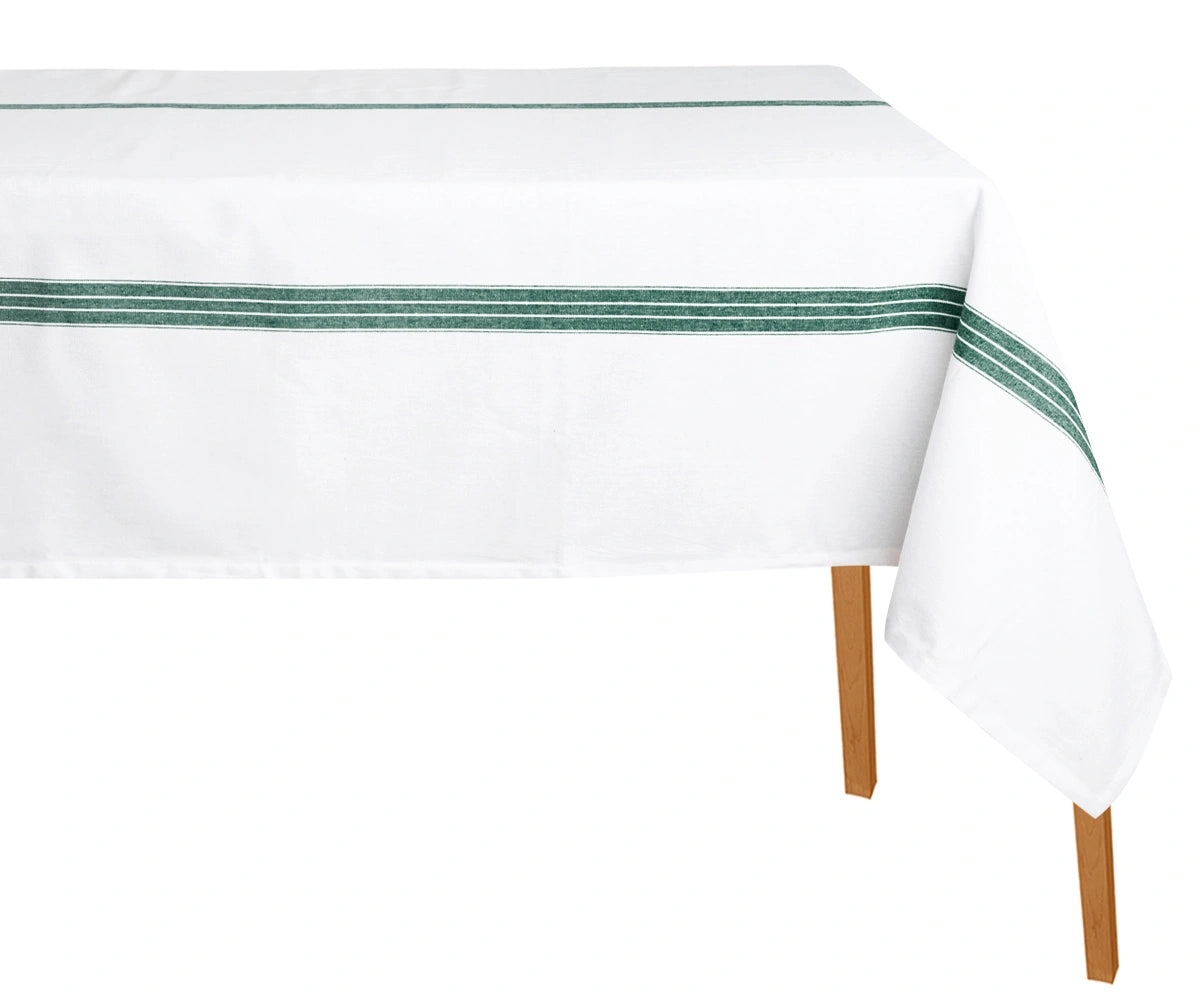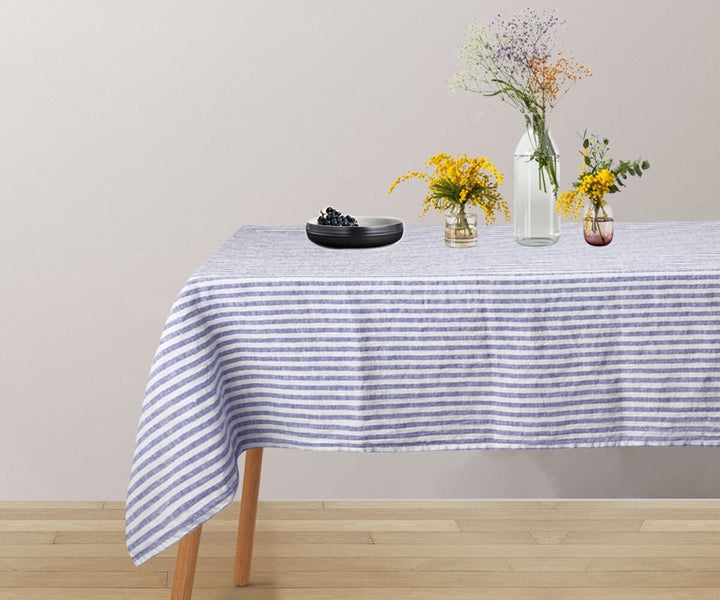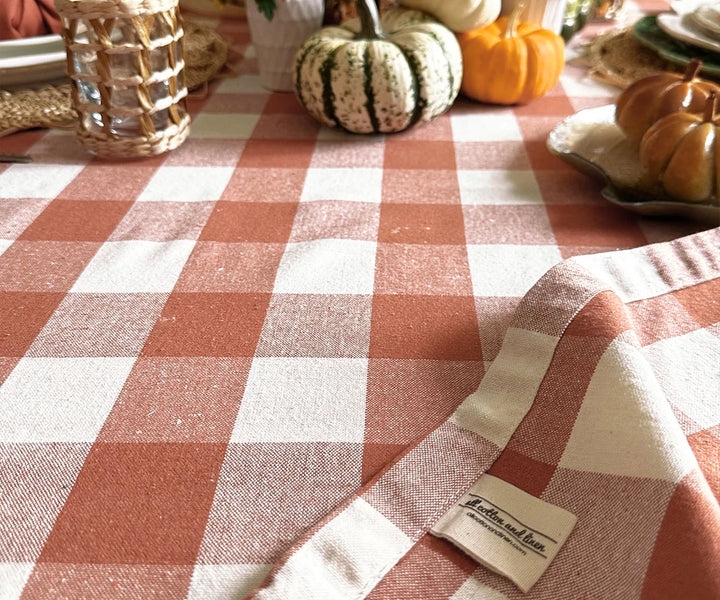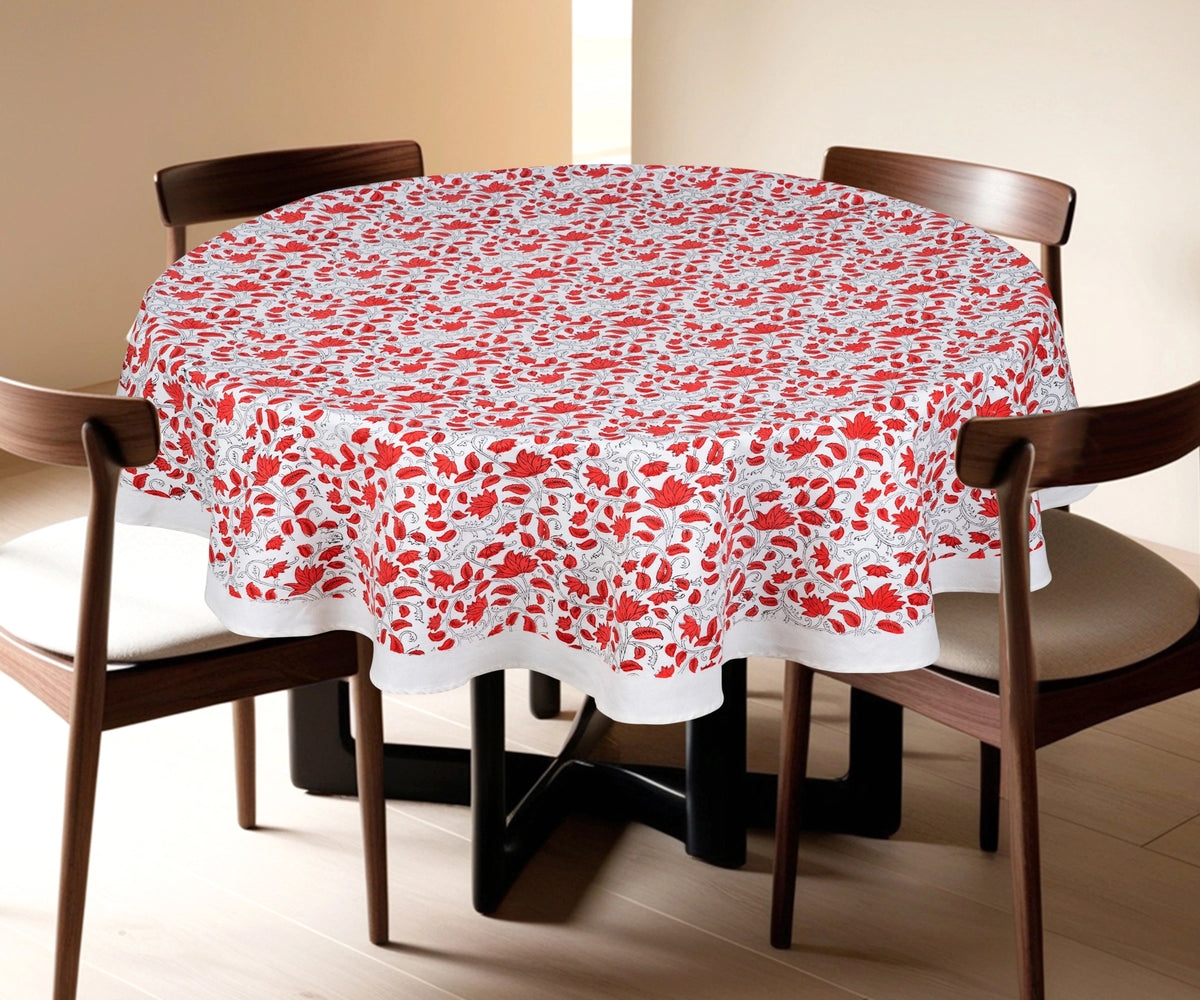Imagine this: soft candlelight flickers across a table, laughter fills the room, and plates of food are passed between friends. Beneath it all lies a quiet hero of the dining experience, the tablecloth. It’s more than just fabric; it’s a reflection of taste, intention, and increasingly, sustainability.
In homes and event spaces worldwide, the traditional tablecloth is being reimagined. No longer just about beauty, it now symbolizes mindfulness, a balance between elegance and eco-conscious living. The rise of eco-friendly tablecloths signals a shift in how we think about home décor and the planet.
The Rise of Eco-Friendly Tablecloths in Modern Dining

Today’s homeowners care about where things come from, how they’re made, and what impact they leave behind. That awareness has inspired a renaissance in sustainable dining décor. The eco-friendly tablecloth sits at the center of this movement, functional, stylish, and ethically made.
People are moving away from synthetic fabrics toward organic linen and cotton tablecloths, materials that are renewable, biodegradable, and crafted with care. The dining table has become more than a gathering space; it’s a canvas for conscious living.
Linen Tablecloth: Timeless Beauty and Sustainable Elegance

A linen tablecloth carries an old-world grace that never fades. Derived from the flax plant, linen is one of the most sustainable textiles on earth. It requires minimal water, grows without synthetic chemicals, and lasts for decades.
But linen’s appeal isn’t just environmental, it’s emotional. Its slightly textured feel and effortless drape give every meal a sense of warmth and refinement. Each crease tells a story of use and memory, a reminder that sustainability and beauty can live side by side.
A linen tablecloth isn’t disposable; it’s heirloom-worthy, the kind that grows softer and more sentimental with time.
Cotton Tablecloth: Everyday Comfort with a Natural Soul

If linen is the symbol of timeless luxury, the cotton tablecloth represents everyday comfort. Cotton tablecloth has been a household favorite for generations, valued for its softness, breathability, and easy care.
What’s changing now is how cotton is produced. Organic and fair-trade cotton eliminates pesticides, conserves water, and supports ethical labor. When you choose a sustainable cotton tablecloth, you’re choosing a cleaner planet and a fairer supply chain, without sacrificing the classic charm of your dining space.
It’s a small switch with a big impact, the kind of choice that defines a mindful home.
The Modern White Tablecloth: Minimalism Meets Meaning
A white tablecloth has always been the hallmark of sophistication. It sets the stage for every occasion, from weddings to everyday dinners. But today, that white canvas stands for more than elegance, it symbolizes simplicity and ethics.
Sustainably woven white linen or cotton tablecloths blend seamlessly into modern interiors. They pair beautifully with reclaimed wood, ceramic dinnerware, and recycled glass, creating a minimalist look rooted in eco-conscious design.
In the age of mindful consumption, the white tablecloth represents more than style. It represents values.
Colorful Statements: From Plaid Cloth to Red and Black Tablecloths
Who says sustainability has to be neutral? Modern eco-friendly décor celebrates color with conscience.
A plaid cloth tablecloth evokes rustic comfort, perfect for countryside brunches and cozy winter dinners. A red and black tablecloth makes a bold statement, ideal for moody candlelit evenings. For summer gatherings, a striped tablecloth brings playful sophistication to outdoor dining.
These textiles are often dyed with non-toxic, water-based pigments, beautiful for your table, safe for the environment. Sustainability has never been so vibrant.
Printed and Patterned Tablecloths: Art Meets Responsibility
A printed tablecloth adds creativity and personality to your dining setup. From hand-block florals to abstract designs, sustainable prints are making waves in modern décor.

Instead of harsh synthetic dyes, eco-conscious brands now use natural, plant-based pigments and low-impact processes. These patterns don’t just decorate a table; they tell a story of artistry, culture, and conscious craftsmanship.
When you choose a printed tablecloth, you’re not just setting the table, you’re setting a tone for ethical elegance.
Rectangle Tablecloth or Round Tablecloth: Choosing the Shape That Fits
Shape matters more than most people realize. A rectangle tablecloth adds symmetry and structure, perfect for formal dining or banquet layouts. Meanwhile, a round tablecloth feels organic and intimate, ideal for gatherings where connection matters more than presentation.
Both can be sustainable, depending on the materials and methods used. Whether you prefer the modern geometry of rectangles or the cozy inclusiveness of round shapes, the right tablecloth transforms how people interact around your table.
Texture and Layering: The New Language of Dining Decor
The tactile experience of dining décor is often overlooked, and yet, it’s what makes a setting memorable.
The natural wrinkles of a linen tablecloth tell a story of comfort. The smooth surface of a cotton tablecloth adds freshness and polish. Layering fabrics, such as a white base cloth with a striped or printed overlay, creates dimension and depth.
Texture invites touch, and touch creates warmth. It’s what turns a table from functional to emotional.
Sustainable Craftsmanship: The Art Behind Every Tablecloth
Every eco-friendly tablecloth has a human story behind it. In European villages and Indian workshops alike, artisans are bringing traditional weaving and dyeing techniques back to life.
These makers prioritize slow production over mass manufacturing, creating tablecloths that are truly one of a kind. Supporting such craftsmanship sustains local economies, preserves heritage, and celebrates the artistry that machines can’t replicate.
When you buy a linen or cotton tablecloth made by hand, you’re not just purchasing décor, you’re preserving culture.
Trends Shaping Sustainable Dining Décor in 2025
The future of dining décor is unmistakably green. The leading trends include:
Sustainable Texture: Mixing linen, hemp, and organic cotton for natural layers.
Color and Character: Earth tones paired with statement hues like terracotta or black.
Ethical Craftsmanship: Handmade over factory-made, with transparent sourcing.
Layered Design: Combining rectangle tablecloths and round tablecloths for visual balance.
Timeless Minimalism: Simple, durable fabrics that transcend trends.
Each reflects a shift from decoration to intention, a move toward homes that feel good and do good.
The Emotional Connection: Dining with Purpose
Dining has always been about togetherness. The eco-friendly tablecloth deepens that bond by adding purpose to beauty.
When your tablecloth is made from sustainable materials, it carries meaning. It’s not just fabric; it’s a statement of care for the planet and the people who make it. Every meal becomes an act of gratitude, a gentle reminder that mindful choices can create both comfort and change.
A sustainable tablecloth doesn’t just dress your table, it dresses your values.
Durability and Reuse: The Beauty of Longevity
True sustainability lies in longevity. Natural fabrics like linen and cotton age gracefully, gaining softness and character over time.
Unlike disposable synthetics, a high-quality linen tablecloth or cotton tablecloth can be reused across seasons and occasions. Rotate them creatively:
Use your white tablecloth for formal dinners.
A plaid cloth tablecloth for rustic brunches.
A striped tablecloth or printed tablecloth for festive celebrations.
This is the essence of zero-waste living, investing in timeless pieces that reduce consumption and elevate everyday life.
Real Stories, Real Tables
In Northern California, a couple recently hosted their wedding with reclaimed wooden tables draped in pale linen tablecloths. The décor was simple but breathtaking, wildflowers in jars, candles flickering in the breeze, and fabric that told a story of care.
In another example, a family-run restaurant in Italy replaced synthetic covers with organic cotton tablecloths. Diners noticed immediately. The space felt warmer, more authentic. Sustainability, they realized, could be felt as much as seen.
Each tablecloth in these stories did more than decorate, it connected people to something real.
How to Choose the Right Eco-Friendly Tablecloth
When shopping for a sustainable tablecloth, here’s what to keep in mind:
Material: Choose linen, organic cotton, or recycled blends.
Dyes: Opt for plant-based or low-impact color processes.
Quality: Look for tight weaves and reinforced hems for durability.
Certifications: Seek GOTS or OEKO-TEX standards for verified sustainability.
Versatility: Select neutral tones or subtle patterns that suit multiple occasions.
A good tablecloth should last years, not months, aging gracefully and telling stories along the way.
The Future of Dining Décor: Sustainability as the New Luxury
So, are eco-friendly tablecloths the future of dining décor? Without question. They combine elegance, ethics, and endurance in a way that defines the modern era of design.
A round tablecloth in organic linen, a rectangle tablecloth in soft cotton, or a bold red and black tablecloth for statement settings, all can be sustainable if chosen thoughtfully.
The future of dining décor is about meaning, beauty with conscience, comfort with awareness, and luxury with longevity.
Conclusion: A Table Set for Change
When you unfold a linen tablecloth and smooth it across your table, you’re doing more than preparing for dinner. You’re embracing a movement, one where style meets sustainability and tradition meets transformation.
Every eco-friendly tablecloth represents a promise: to live beautifully, responsibly, and connected to the world that sustains us.
The tablecloth is no longer just a piece of fabric. It’s a reminder that every choice we make, even at the dinner table, can help create a greener future.
